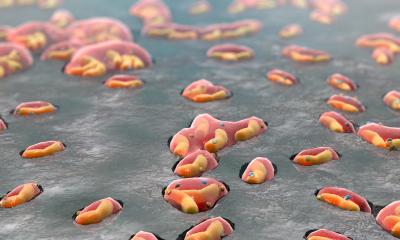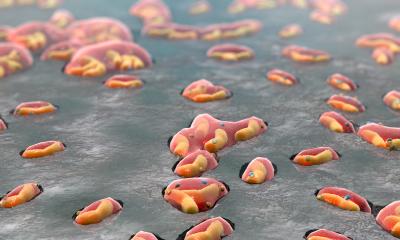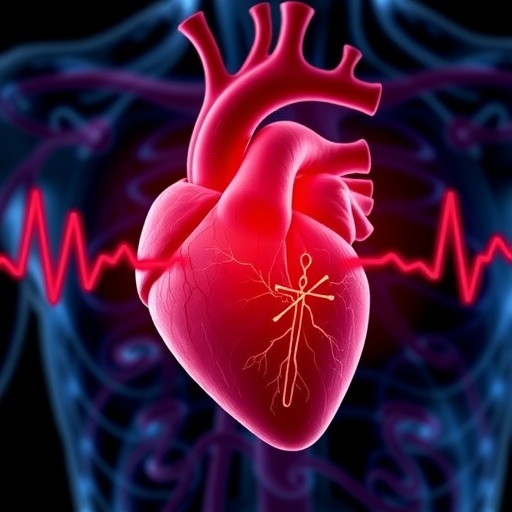
Credit: HZDR/ Sander Münster
Copper and other non-ferrous metals cannot be fully broken down in mines, and residues of the valuable metals remain even after the metallurgical processes that follow. Residues are stored on tailings. The new German-Polish research project NOMECOR has two aims, namely to reclaim the metals as well as to make the mineral components of the tailings usable for cement production. The Federal Ministry for Research and Education is funding the research project for three years with approximately 500,000 euros. This is coordinated by the Helmholtz Institute Freiberg for Resource Technology (HIF) at the Helmholtz-Zentrum Dresden-Rossendorf as well as the Polish Institute for Non-ferrous Metallurgy (IMN).
"The project intends to improve access to copper, a socio-economically important bulk metal," says project coordinator Dr Stefan Dirlich from the Freiberg Helmholtz Institute. Copper is expensive and in great demand, as it is used for electric wiring and machines, as well as for alloys such as brass or bronze. However, mining it is becoming increasingly difficult as the metal content in the ores is very low nowadays. The project is targeting several aims simultaneously as far as sustainability is concerned: greater resource efficiency by recycling the metals from tailings, and regaining natural areas by reducing tailings. The Karlsruhe Institute of Technology, the G.E.O.S. Ingenieurgesellschaft mbH and the Polish enterprise Hydrogeometal PK are also involved in the project.
Microorganisms eat copper
Bio-technicians working at the Helmholtz Institute want to use microorganisms to remove copper and other valuable metals from tailings. The research partners at IMN and GEOS intend to test the chemical methods for this. Furthermore, they will investigate how pure metals separate from dissolved copper ores and how further residues can be minimised. In this project, scientists from the Karlsruhe Institute of Technology want to investigate whether mineral tailing deposits are suitable for the production of cement.
With this project, the Helmholtz Institute in Freiberg is enhancing its research into recycling reusable materials from mining waste sites. Apart from natural mineral deposits, these may become important secondary sources of raw materials in future, especially as there are tailings everywhere in the world where mining was or is carried out.
Raw material samples from Poland
The project partners want to work with sample materials from a flotation tank which is currently being developed in a Polish mine. All residues which result during the enrichment (flotation) of copper and other valuable metals to a metal concentrate are deposited in such pools. The residues eventually pile up in tailings; their volumes are many times greater than the amount of metal extracted. About 2.4 million tons of copper still remain in tailings of non-ferrous mines in Poland, which also includes copper. Only coal mines have a greater number of tailings.
The kick-off for the NOMECOR research project recently took place in the Polish town of Poznan as part of the status seminar on STAIR – the programme for German-Polish research on sustainability. All funded programmes to date were introduced at this event. NOMECOR is part of the second round of funding and the only research project in the field of resource efficiency.
###
For more information:
Dr. Stefan Dirlich | Project coordinator
Helmholtz Institute Freiberg for Resource Technology at HZDR
Phone: +49 351 260-4413| E-Mail: [email protected]
Dr. Katrin Pollmann | Senior scientist
Helmholtz Institute Freiberg for Resource Technology at HZDR
Phone: +49 351 260-2946| E-Mail: [email protected]
Media contact:
Anja Weigl | Press officer
Helmholtz Institute Freiberg for Resource Technology at HZDR
Phone: +49 351 260-4427| E-Mail: [email protected]
The Helmholtz-Zentrum Dresden-Rossendorf (HZDR) conducts research in the sectors energy, health, and matter. The HZDR has been a member of the Helmholtz Association, Germany's largest research organization, since 2011. It has four locations (Dresden, Leipzig, Freiberg, Grenoble) and employs about 1,100 people – approximately 500 of whom are scientists, including 150 doctoral candidates.
The Helmholtz Institute Freiberg for Resource Technology (HIF) pursues the objective of developing innovative technologies for the economy so that mineral and metalliferous raw materials can be made available and used more efficiently and recycled in an environmentally friendly manner. The HIF was founded in 2011, belongs to Helmholtz-Zentrum Dresden-Rossendorf and is cooperating closely with TU Bergakademie Freiberg.
Media Contact
Anja Weigl
[email protected]
49-351-260-4427
@HZDR_Dresden
http://www.hzdr.de/db/Cms?pNid=0
############
Story Source: Materials provided by Scienmag





